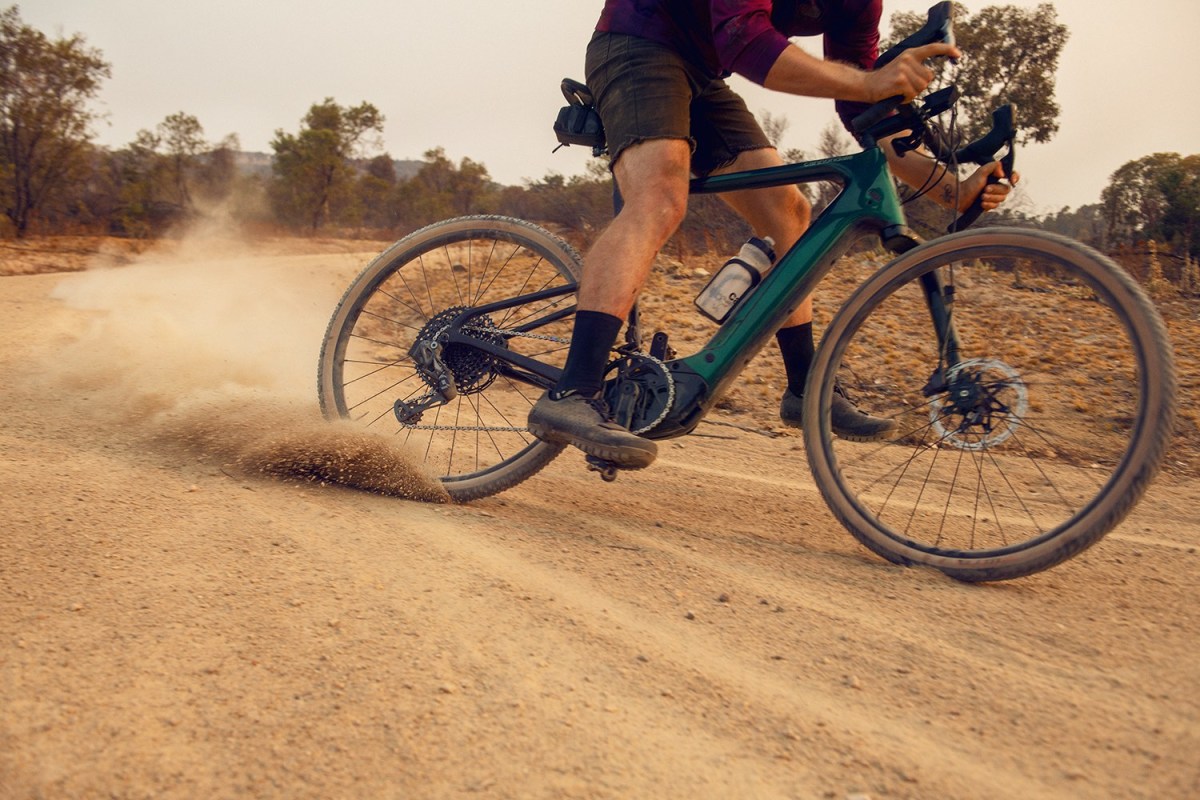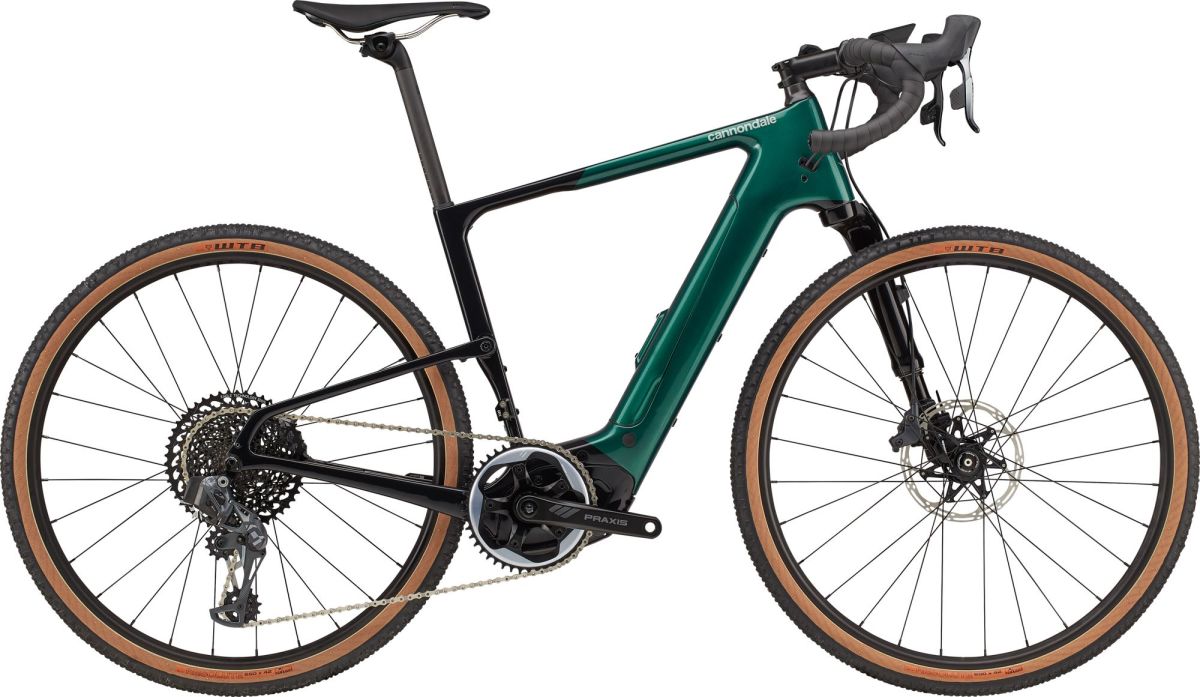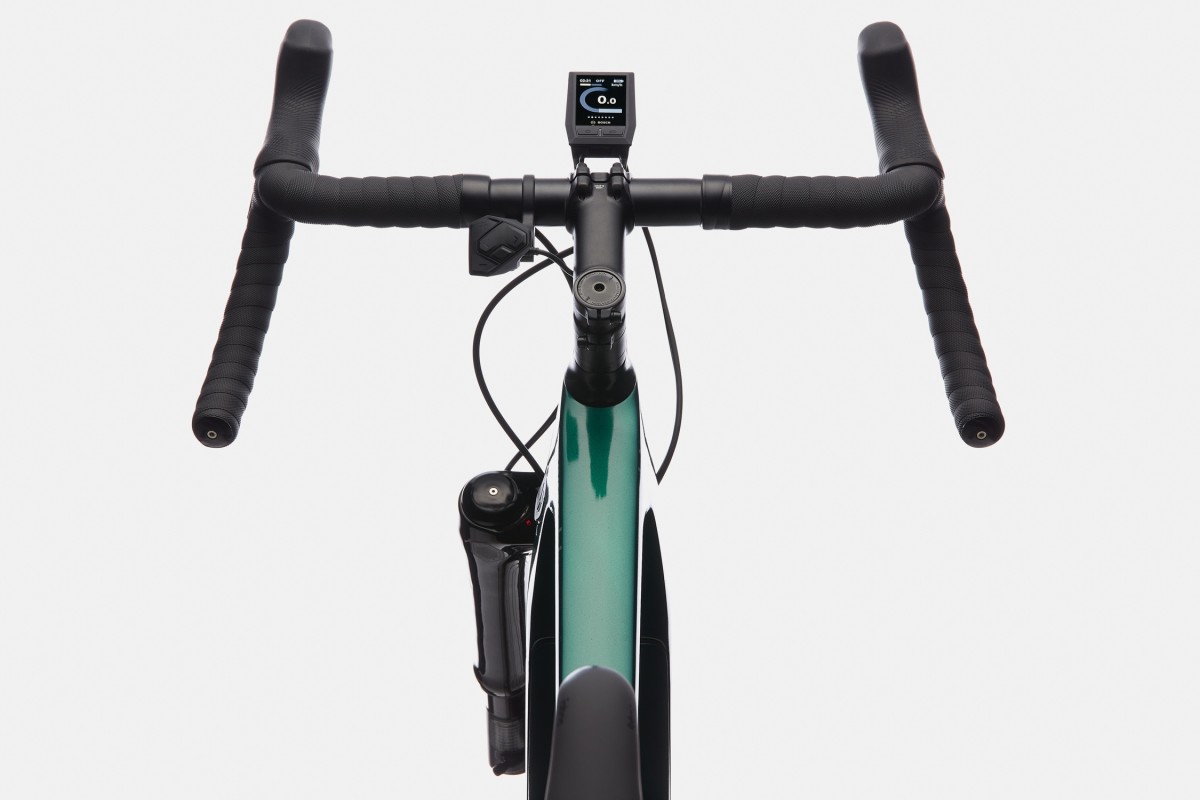Talk to any bike industry insider and you’ll hear the same thing. Two categories are poised for exponential growth in the next decade: gravel bikes and e-bikes. Gravel bikes, the sweet spot between road cycling and mountain biking, invite open adventure along any road. E-bikes offer unprecedented accessibility, an undeniable fun factor, and an alternative transportation option to cars. Both reach out to new riders as much as they attract established cyclists.
What happens when you mix fire and gasoline? You get e-gravel bikes.
While this new category, electric gravel bikes, is still a niche category as far as sales go, it is worth considering because these bikes can do almost anything—at least where motors are permitted. Great for commuting, adventuring off the beaten path, getting in a good workout, or just going for a joy ride, these battery-aided hybrid bikes are the best of both worlds. I’ve had some of my favorite rides in the last year on e-gravel bikes, specifically two of the top new models worth comparing.

The Cannondale Topstone Neo Carbon and Specialized’s Turbo Creo SL, are, as far as I’m concerned, the best on the market. Both bikes are new this year and have significantly upped the standard for the emerging category. Specifically designed to help you go farther on dirt roads and flowy singletrack, these bikes have the potential to unlock a new style of riding for a broader audience. To help you decide which is better fit for you, let’s compare them head-to-head!
Note: Both bikes are offered in a handful of tiers, mostly differentiated by the quality of components. This allows for a wider array of price points. For the purposes of this article, I reference the highest tier of both.

Weight: Cannondale relies on an off-the-shelf motor and battery from Bosch, while Specialized custom-built the motor for the Creo SL, which saves them a notable amount of weight. The Topstone claims to weigh in at 36 pounds, but my test bike was closer to 40. On the other hand, the Creo was right around 27 pounds, at least 10 pounds lighter by my measurement. Advantage: Specialized.

Suspension: Some of the Topstone’s weight disadvantage can be explained by its dual suspension: The Kingpin in the rear and the front Lefty fork both offer 30mm of travel. Compare this to the Creo, which has 20mm of travel in its Future Shock 2.0 (and none in the near); you can start to see the differences in these two bike designs. While the Future Shock punches above its weight class in terms of smoothing rough terrain, the dual suspension allows the Topstone to tackle more aggressive terrain. Score one for Cannondale.
Speed: Unless you’re an aero-obsessed roadie, this category is a bit arbitrary, so bear with me (note: I don’t own a wind tunnel). I found the top end of the Creo a bit faster than the Topstone, especially on asphalt and smoother dirt roads. The more traditional road geometry and lighter bike allows for a reduced rolling resistance, despite an 11-speed drivetrain compared to the 12-speed on the Topstone. However, on singletrack I found myself riding the Topstone more aggressively, thanks to a dropper post (the Creo is compatible, just didn’t have one) and more supple suspension. Overall, slight edge to Specialized.

Tires: The Topstone comes stock with knobby 42c tires while the Creo comes with smaller 28c tires, which show what they are truly made to do. The Topstone was designed for traction and handling on rough surfaces, while the Creo more for versatility and speed. That said, the Creo actually has the wider range, with clearance that can fit a 650x50c tire, while the Topstone tops out at 650x47c. Both come tubeless ready. Comparing stock bikes, Cannondale’s gets the slight edge because it’s better on gravel.
Battery: The Creo offers a marginally bigger battery range, 80 miles compared to 78. The difference, in my experience, is negligible, because it varies considerably by how hard you ride, especially when going uphill. I found that both bikes provided around 50-60 bonus miles for my riding style. Specialized does offer an additional range extender, providing 40 extra miles of riding. With this in mind, I have to give the Creo SL a slight edge on battery life.
Price: The big downside to a custom motor in the Creo is that it’ll cost you a pretty penny. While the highest tier Topstone is $9,000, the S-Works Creo SL is $13,500. With a price that’s 50 percent more, Specialized has created a bike that is out of many riders’ budgets. Advantage: Cannondale.

Software Integration & Ride Feel: Both bikes feel smooth from the get-go, seamlessly integrating the battery and motor into your natural pedaling effort. However, there is a big difference in the software and interface for the rider. The Topstone has a small computer the size of a Garmin mounted to the handlebars that displays many data points. This unit is quick to figure out and easy to use. The Creo SL has a more advanced system, with a full app called Mission Control that has a steeper learning curve but offers more customization. Depending on the type of rider you are, each has some clear advantages.
Final Word: The three biggest differences to me are weight, budget, and use case. The Creo SL is the much lighter bike, while the Topstone Neo is considerably cheaper (relatively speaking). Often the deciding factor comes down to how you plan to ride, which fits a similar trend in the bike world, with the category slowly splitting in two: “Groad” riders who share time between paved and gravel surfaces are likely happier on the Creo SL; downhill gravel riders will appreciate added suspension in the Topstone Neo. Both offer an entirely new type of two-wheeled adventure.
from Men's Journal https://ift.tt/37O08gM
via IFTTT











0 comments:
Post a Comment